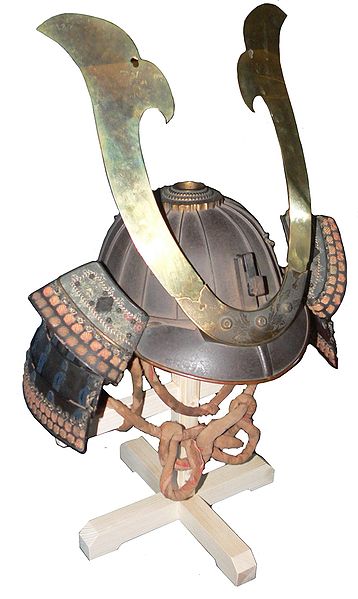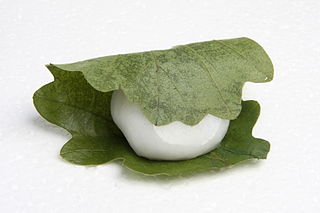Kodomo no hi: Children's Day Celebration
Kodomo no hi: Children's Day Celebration
Background Information.
In Japan, Kodomo no hi, or "Children's Day," is celebrated every year on May 5. On this national holiday, children are respected and honored for their individual strengths and happiness is wished upon them. Children's Day was originally known as Tango no Sekku (literally nearing the seventh sign of the chinese zodiac, but usually translated as Boys Day)and was a celebration for boys. The holiday was officially changed to celebrate the health and growth of both girls and boys in 1948. Kodomo no hi is particularly well known for the unique traditions and decorations that are associated with the celebration of the holiday.
On Kodomo no hi, Koinobori, or cloth carp streamers, are flown on poles outside of public buildings and private houses to bring luck and good fortune to the children inside. Koi fish, or Carp, are believed to be strong, spirited fish and are revered for their determination in fighting as they swim upstream and through powerful waterfalls. Koinobori symbolize the desire for children to become brave and strong indivuduals.

Koi Streamers. Photo c. George Hirose
Grade Level: Kindergarten – 3rd grade
Learning Goals.
- Children will bea able to identiy symbols associated with Children's Day
- Children will be exposed to traditional Japanese culture through experiencing Children's Day customs.
- Children will be able to compare and contrast two traditional Japanese folktales.

Photo c. George Hirose
Standards.
- CCR Anchor Standards for Speaking and Listening: Comprehension and Collaboration: Integrate and evaluate information presented in diverse media and formats, including visually, quantitatively, and orally.
- RL.1.9. Compare and contrast the adventures and experiences of characters in stories.
Grade 2
- RL.2.2. Recount stories, including fables and folktales from diverse cultures, and determine their central message, lesson, or moral.
- RL.2.3. Describe how characters in a story respond to major events and challenges.
Grade 3
- RL.3.2. Recount stories, including fables, folktales, and myths from diverse cultures; determine the central message, lesson, or moral and explain how it is conveyed through key details in the text.
Key Concept. Kodomo no hi, one of the most popular and beloved Japanese holidays, has universally understood symbolism and meaning.
Essential Question. On Children's Day, what are the primary wishes for children and how are they expressed?
Primary Source. N/A
Thought Questions. 1. What are the primary symbols associated with Chidren's Day? What is the symbolism?
Activities
Focus Activity Ideas. Do your students celebrate Children's Day in their culture? If so, how do they normally celebrate? Is there a meaning or symbolism behind the customs and food? Are there specific stories associate with their Children's Day? If the children do not celebrate Children's Day, what wishes do they have for all children?
Main Lesson Activity Ideas.
Introduction of Kodomo no hi, Children’s Day in Japan.
Explain what Kodomo no hi is and how to celebrate it.
“May 5th is Kodomo no hi in Japan. That means "Children’s Day." It's a day to celebrate and wish for the health and good fortune for all children. This day is very important because children like all of you are very important. This is why the day is a national holiday in Japan.”
Show pictures of decorations and food.
1)koinobori

2) kabuto

Photograph of Kabuto by Rama, available under a Creative Commons Attribution-ShareAlike 2.0 France license.
3)gogatsu-ningyo

Photograph by GanMed64, available under a Creative Commons Attribution 2.0 Generic license.
4)kashiwa-mochi

Photograph of kashiwa-mochi by Jiangang Wang, available under a Creative Commons license.
Koinobori song
Sing the koinobori song to children while showing the koinobori. (PDF of lyrics)
♪Lyrics to be written on a sheet of paper to put on a wall
やねよりたかいこいのぼり
おおきいまごいはおとうさん
ちいさいひごいはこどもたち
おもしろそうにおよいでる
(Romanized lyrics)
Yane yori takai koinobori
Ookii magoi wa otoosan
Chiisai higoi wa kodomo tachi
Omoshirosoo ni oyoideru
(English translation)
Carp streamers are higher than the roof
The biggest carp is the father
The small carp are children
Enjoying swiming in the sky
Sing along with children. (Editor's note: An audio file of the Koinobori song is available on the MIT music archives page.)
Photograh c. George Hirose
Kintaro: the Nature Boy
Introduce “Kintaro, the Nature Boy” to children. “Kintaro is a healthy, strong and very kind boy. This story has been loved by children in Japan for a long long time. Let’s find out how strong and kind he is.”
Storytelling: “Kintaro, the Nature Boy” Text for the story of Kintaro can be found here.
It might be a good idea to serve snacks for children while listening to the story.
Newspaper Kabuto (Samurai Helmets)

Photo c. George Hirose
Show a picture of kabuto, a samurai helmet and gogatsu-ningyo, a samurai doll.
“Along with koinobori, children in Japan decorate kabuto, a samurai helmet and/or gogatsu ningyo, a samurai doll which represent strength. Let’s make kabuto with newspaper and wear them!”
Make a kabuto with newspaper. Downloadable instructions with photos, or Origami Club has diagrams and an animation.
Take a picture of children wearing kabuto and holding koinobori individually or as a whole class.
Momotaro: The Peach Boy and Japanese Sweets
Introduction of kashiwa-mochi and chimaki.
“Japanese children eat sweets, kashiwa-mochi and chimaki on the Kodomo no hi. Kashiwa, or oak trees are strong, so they eat this rice cake to get strong!”
Introduce the story of "Momotaro, the Peach Boy" to the children. The story of Momotaro can be found here. (Viewing this story online requires a fast Internet connection. Teachers may prefer to download the PDF from the site instead).
“Do you remember the strong and kind boy we read a story about? Yes, that is Kintaro. Here is another boy who is strong and kind in a Japanese folk tale. That is Momotaro. Let’s find out how strong and kind he is!”
Storytelling, "Momotaro, the Peach Boy."
Ask children to describe the similarities and differences between Momotaro and Kintaro. Do they think they would be friends? Possible extension activities include: create a story or image depicting a meeting between Momotaro and Kintaro; creating a Venn diagram showing their similarities and difference; or creating a poster showing the important props in both stories and their meanings.
Shobu: Iris Flower
1) Make an origami shobu, or iris flower. Origami Club has diagrams and an animation.
Shobu, iris flowers are seasonal flower at the time of Kodomo no hi, in early summer in Japnaese calendar. And it has important role in the celebration.
This origami activity is recommended for older children because this requires advanced eye hand coordination.
Summative Activity Ideas. The United Nations proclaimed November 20th as Universal Children's Day. If your students were organizing a Universal Children's Day celebration at your school, how would they celebrate? What rituals or activities would they do and why? Would they adapt any aspects of the Japanese Children's Day?
Resources.
Picture books:
Online resources:
Ozaki, Yei Theodora. "The Adventures of Kintaro, the Golden Boy." Japanese Fairy Tales. The Project Gutenberg EBook of Japanese Fairy Tales: http://www.gutenberg.org/files/4018/4018-h/4018-h.htm#kintaro.
"Momotaro." Japanese Fairy Tale Series #1. www.archive.com: http://www.archive.org/stream/momotaroorlittle00londiala#page/n0/mode/2up



